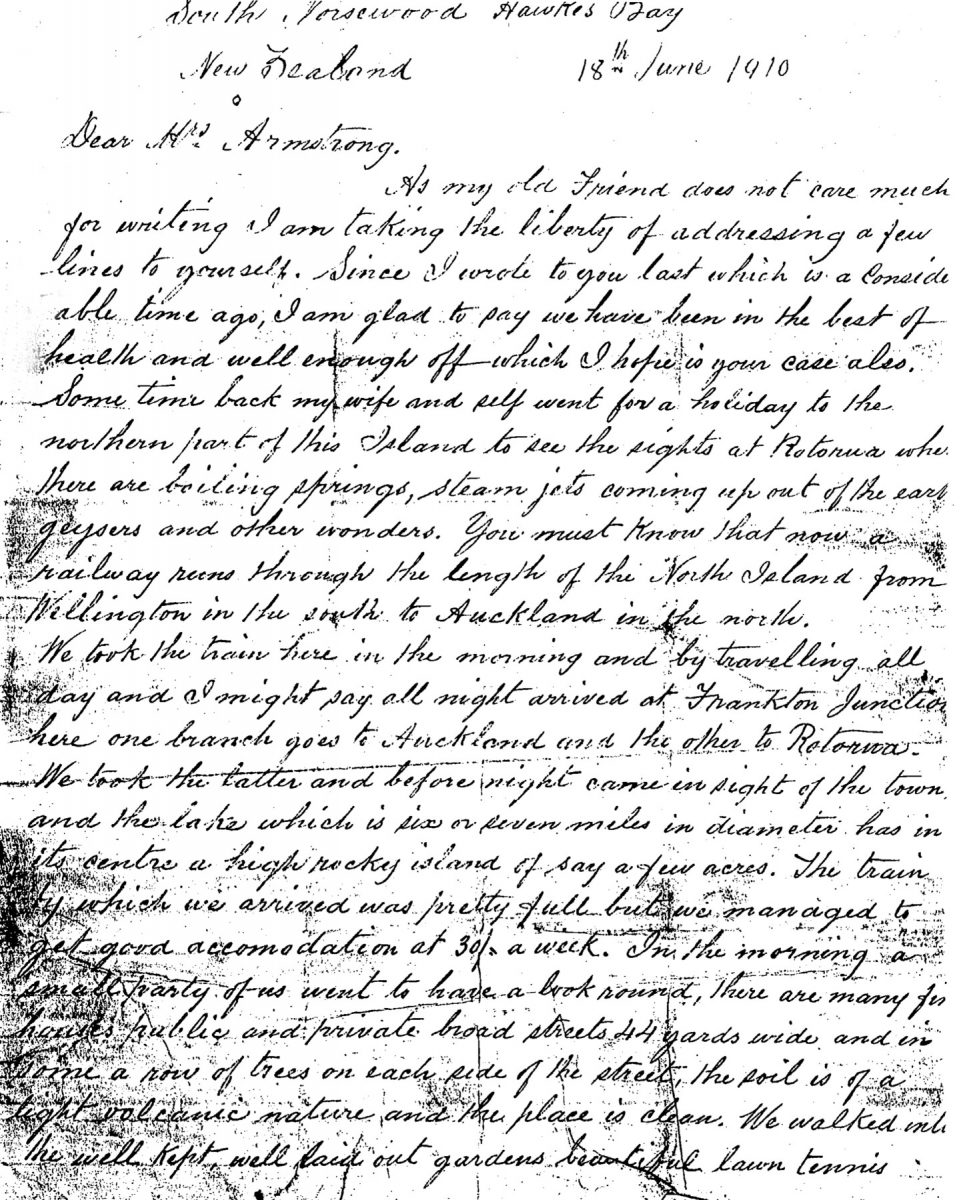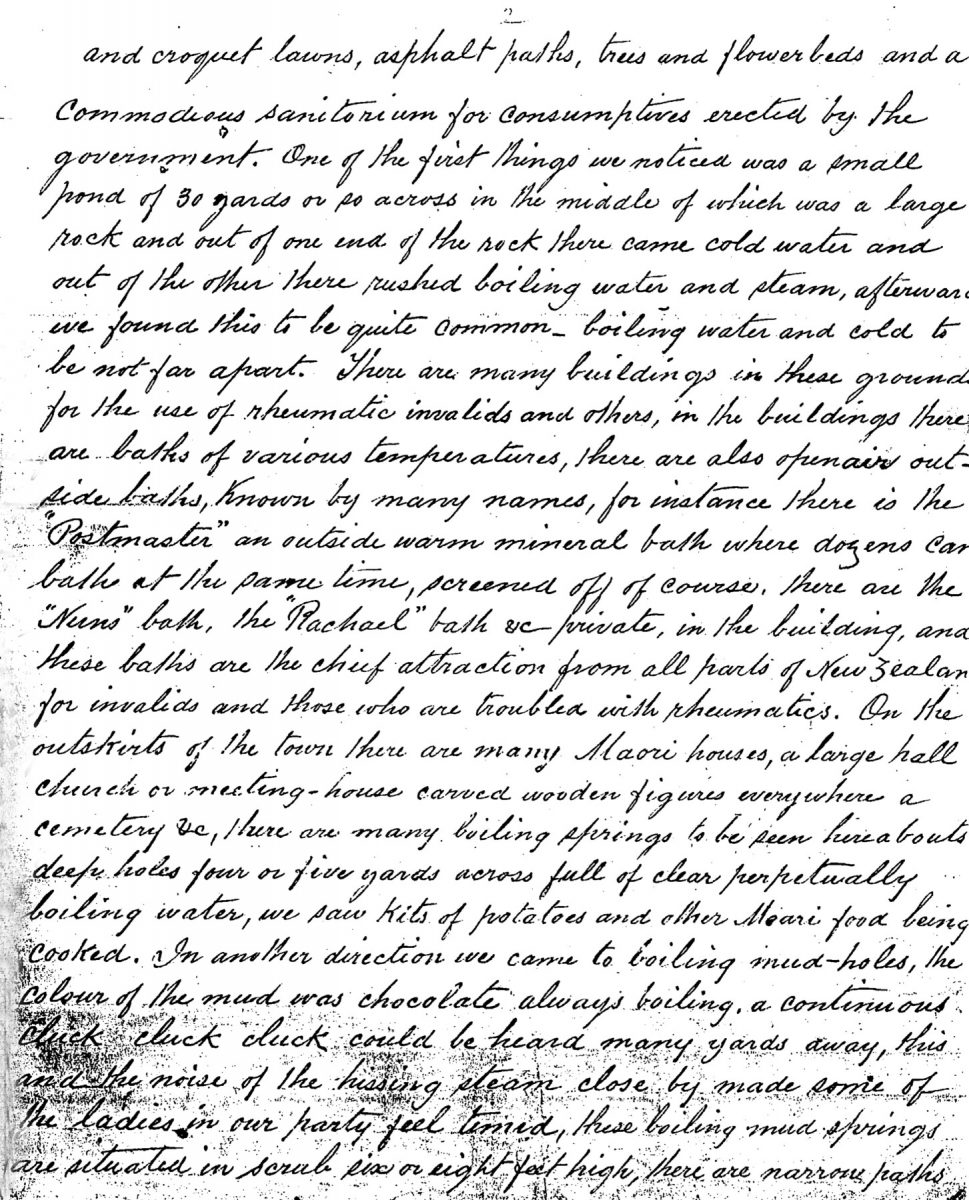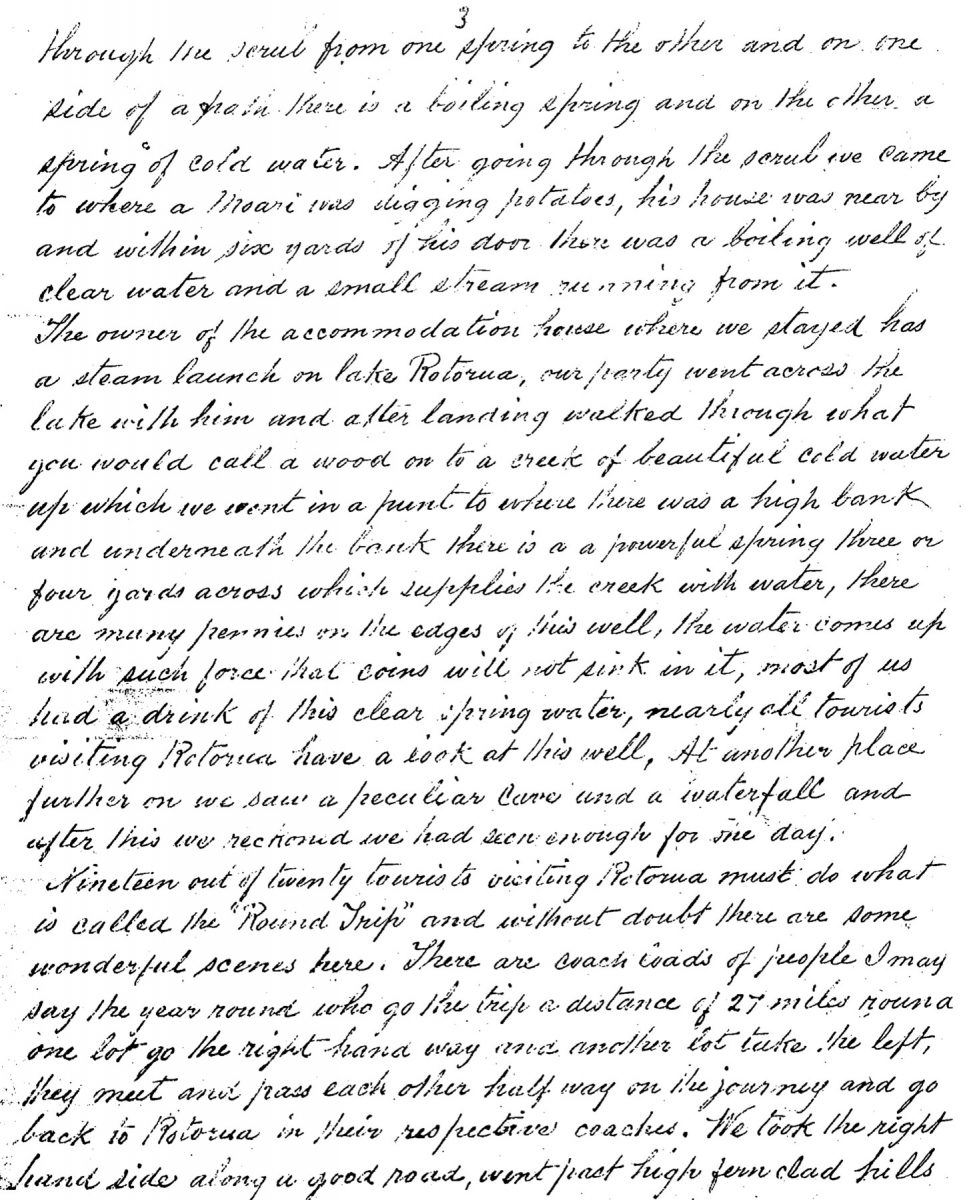South Norsewood Hawke’s Bay
New Zealand 18th June 1910
Dear Mrs Armstrong
As my old Friend does not care much for writing I am taking the liberty of addressing a few lines to yourself. Since I wrote to you last which is a considerable time ago, I am glad to say we have been in the best of health and well enough off which I hope is your case also.
Some time back my wife and self went for a holiday to the northern part of this Island to see the sights at Rotorua where there are boiling springs, steams jets coming up out of the earth geysers and other wonders. You must know that now a railway runs through the length of the North Island from Wellington in the south to Auckland in the north.
We took the train here in the morning and by travelling all day and I might say all night arrived at Frankton Junction where one branch goes to Auckland and the other to Rotorua.
We took the latter and before night came in sight of the town and the lake which is six or seven miles in diameter has in its centre a high rocky island of say a few acres. The train by which we arrived was pretty full but we managed to get good accommodation at 30/- a week. In the morning a small party of us went to have a look round, there are many fine houses public and private broad streets 44 yards wide and in some a row of trees on each side of the street, the soil is of a light volcanic nature and the place is clean. We walked into the well kept, well laid out gardens beautiful lawn tennis



















Do you know something about this record?
Please note we cannot verify the accuracy of any information posted by the community.